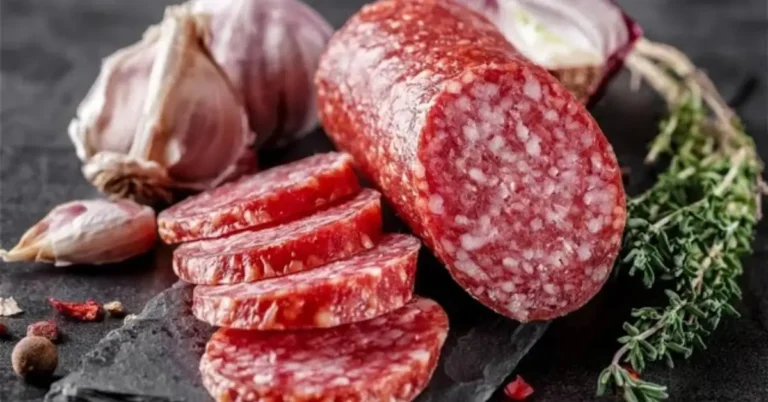Is Asparagus Keto Friendly? Exploring Its Benefits and Nutritional Value
As you explore the world of low-carb eating, you might wonder about the role of various vegetables in your diet. Asparagus is indeed keto-friendly, making it a great addition to your meals. This nutritious vegetable is low in carbs and packed with vitamins, making it a popular choice for those following the ketogenic diet.

Incorporating asparagus into your keto meals not only adds flavor but also provides essential nutrients. From side dishes to salads, there are many ways to enjoy this versatile vegetable while maintaining your dietary goals. By understanding its nutritional profile, you can enhance your meals without disrupting your ketosis.
Key Takeaways
- Asparagus is low in carbs and suitable for keto diets.
- It offers essential vitamins and minerals for better health.
- There are various ways to include asparagus in your meals.
Asparagus: An Overview

Asparagus is a popular vegetable known for its unique taste and numerous health benefits. It contains essential nutrients and plays a key role in low-carb diets. Let’s explore its nutritional profile and why it’s favored in these eating plans.
Nutritional Profile
Asparagus is low in calories and high in important vitamins and minerals. A typical serving of cooked asparagus (about 60 grams or 4 spears) has approximately 20 calories, 2.5 grams of total carbohydrates, and 2 grams of dietary fiber.
It is also rich in vitamins A, C, E, and K. These vitamins support your immune system, skin health, and bone health. Moreover, asparagus contains antioxidants that help reduce inflammation and protect your cells.
Additionally, this vegetable contains minerals like potassium and iron, which are crucial for maintaining good health. The low-carb content makes it suitable for those following low-carb or ketogenic diets.
Popularity in Low-Carb Diets
Asparagus is widely embraced in low-carb diets, including keto, due to its low carbohydrate content. With just 2.5 grams of carbs per serving, it fits perfectly into your daily carb limit.
It can be enjoyed in various ways, such as grilled, roasted, or sautéed. Asparagus pairs well with proteins, making it an excellent side dish for meats and fish.
Many people choose asparagus for its health benefits, like improving digestion and supporting heart health by lowering blood pressure. With its versatility and nutritional profile, asparagus is a staple for those looking to maintain a balanced and low-carb diet.
The Ketogenic Diet Explained

The ketogenic diet focuses on altering your body’s fuel source from carbohydrates to fats. This section will discuss the core principles of ketosis, the necessary macronutrient ratios, and the benefits and challenges that come with this dietary approach.
Principles of Ketosis
Ketosis is a metabolic state in which your body uses fat for energy instead of carbohydrates. To enter ketosis, you typically need to reduce your daily carb intake to about 20 to 50 grams. When carb levels are low, the liver converts fats into ketones, which serve as an alternative energy source.
By achieving ketosis, your body becomes more efficient at burning fat. This can help with weight loss and may improve mental clarity. You can check if you are in ketosis through urine strips or blood tests.
Macronutrient Ratios
The ketogenic diet has specific macronutrient ratios that help maintain ketosis. A common breakdown is as follows:
- Fats: 70-80% of your total daily calories
- Protein: 15-25% of your total daily calories
- Carbohydrates: 5-10% of your total daily calories
For example, if you consume 2,000 calories a day, aim for 1400-1600 calories from fats, 300-500 calories from protein, and only 100-200 calories from carbohydrates.
These ratios can vary based on individual needs, activity levels, and health goals. It’s essential to prioritize healthy fats when following this diet, such as avocados, nuts, and olive oil.
Benefits and Challenges
The ketogenic diet offers several benefits. Many people experience rapid weight loss and improved energy levels. It may also help manage blood sugar levels and reduce hunger, making it easier to restrict calorie intake.
However, there are challenges to consider. Initially, you may experience symptoms like fatigue, headaches, or irritability, often referred to as “keto flu.” Long-term adherence can be difficult, and some people struggle to find suitable food options. Regularly monitoring your nutrient intake is crucial for achieving desired results while avoiding nutritional deficiencies.
Asparagus on a Keto Diet
Asparagus is a great addition to a keto diet due to its low carbohydrate content and high fiber levels. Understanding the specific nutritional aspects can help you incorporate them effectively into your meal plan.
Carbohydrate Content
Asparagus is low in carbohydrates, making it suitable for a keto diet. A half-cup serving of asparagus contains only about 2.5 grams of carbs. This low-carb content means you can enjoy it without disrupting ketosis.
Many keto-friendly vegetables, such as zucchini and broccoli, also share this low-carb profile, but asparagus stands out for its versatility. You can easily add it to salads, and stir-fries, or serve it as a side dish to meats. Remember to track your portions to maintain your carbohydrate limit.
Fiber and Net Carbs
In addition to its low carbohydrate content, asparagus is also high in fiber. A half-cup serving provides around 1.5 grams of dietary fiber. Fiber is important as it aids digestion and helps you feel full.
To calculate net carbs, subtract fiber from total carbs. Therefore, for asparagus, the net carbs are about 1 gram per half-cup serving. This makes it an excellent choice for those aiming to stay within their daily carb limits while enjoying nutritious food. Adding asparagus to your meals can support your keto lifestyle without compromising your goals.
Preparing Asparagus for Keto
Asparagus is a versatile vegetable that can enhance your keto meals. Knowing how to prepare it properly will help you enjoy its benefits while staying on track with your diet.
Cooking Methods
There are several effective cooking methods for preparing asparagus that keep it keto-friendly. Whether you prefer steaming, roasting, or grilling, these methods help maintain the asparagus’s nutrients and flavor.
- Steaming: This method takes about 5-7 minutes. Place asparagus in a steamer basket over boiling water. Steaming keeps it crisp and bright green.
- Roasting: Toss asparagus in olive oil, salt, and pepper. Roast in the oven at 425°F for 10-15 minutes. This method brings out a rich, nutty flavor.
- Grilling: Preheat your grill and brush the asparagus with olive oil. Grill for 5-8 minutes, turning occasionally. Grilling adds a smoky taste, enhancing the vegetable’s natural sweetness.
Keto-Friendly Asparagus Recipes
Incorporating asparagus into keto recipes is simple and satisfying. Here are a few ideas to get you started:
- Garlic Butter Asparagus: Sauté asparagus in butter with minced garlic. Cook until tender and season with salt and pepper for a quick side dish.
- Asparagus Soup: Blend cooked asparagus with vegetable broth, cream, and spices. This creamy soup is perfect for a warm, comforting meal.
- Asparagus and Cheese Bake: Layer asparagus with cheese in a baking dish. Bake until the cheese bubbles for a delightful and cheesy treat.
These recipes allow you to enjoy asparagus in various ways while sticking to your ketogenic plan.
Complementary Keto-Friendly Foods
When following a keto diet, pairing asparagus with other keto-friendly foods can enhance your meals. Here are some great options:
- Healthy Fats
- Avocado
- Olive oil
- Coconut oil
- Proteins
- Grilled chicken
- Salmon
- Eggs
- Low-Carb Vegetables
- Spinach
- Broccoli
- Zucchini
Incorporating healthy fats provides essential energy sources while maintaining low carbohydrate intake. For example, drizzling asparagus with olive oil adds both flavor and beneficial fats.
Proteins are crucial for muscle maintenance and satiety. Pairing asparagus with grilled chicken or salmon makes for a balanced dish.
Adding low-carb vegetables not only boosts nutrients but also keeps meals interesting. Try mixing asparagus with spinach and zucchini in a stir-fry for variety.
These complementary foods can make your keto meals satisfying and nutritious. Remember to consider portion sizes to stay within your carb limits while enjoying diverse flavors.
Monitoring Ketosis
Monitoring ketosis is essential for anyone following a ketogenic diet. By tracking your macronutrient intake and recognizing key indicators, you can ensure your body remains in a state of ketosis. This process helps you achieve your health and weight loss goals more effectively.
Tracking Macros
To stay in ketosis, you need to monitor your macronutrient intake closely. A typical keto diet consists of approximately 70-75% fat, 20-25% protein, and 5-10% carbohydrates. This ratio helps your body shift from burning glucose to burning fat for energy.
Use a food diary or an app to log what you eat. By entering the grams of each macronutrient, you can track your daily totals. Be sure to measure portion sizes accurately. This will help you avoid accidentally exceeding your carbohydrate limit.
It is also important to pay attention to hidden carbs in foods. Items like sauces and dressings can add unexpected carbohydrates. Always read labels and choose products that align with your dietary goals.
Indicators of Ketosis
Several signs can indicate you are in ketosis. One common indicator is a change in your breath, often described as having a fruity smell. This occurs because of the production of acetone, a type of ketone released in your breath.
You may also experience increased energy levels and reduced hunger. Many people find they have fewer cravings as they adapt to the ketogenic diet. Additionally, monitoring your blood ketone levels can provide direct feedback. Blood ketone meters are available over the counter and can help confirm your state of ketosis.
Body changes such as weight loss and enhanced mental clarity are also signs that your diet is working. Stay attuned to how your body feels, as personal experiences can also guide your adjustments to the diet.
FAQS About Is Asparagus Keto Friendly
Asparagus is a popular vegetable among those following a keto diet. Here you will find specific questions and answers about its carb content, recipes, and how it fits into your carb limits.
How many carbs are present in asparagus?
Asparagus is low in carbohydrates. A half-cup of cooked asparagus contains about 1.9 grams of net carbs. This makes it a suitable choice for anyone on a keto diet.
What are some keto-friendly asparagus recipes?
There are many ways to enjoy asparagus on a keto diet. You can sauté it with chicken in a creamy sauce or add it to salads. Asparagus also works well in egg bakes and stir-fries.
Can you consume asparagus on a keto diet in unlimited quantities?
While asparagus is low in carbs, it is best to consume it in moderation. Eating too much of any food can disrupt your balance. Aim for a reasonable portion that fits within your daily carb goals.
How does asparagus fit into the keto diet’s daily carb limit?
Asparagus can easily fit into your daily carb allowance. Since it has low net carbs, you can include it in meals without exceeding your limit. Just monitor your total carb intake from all sources.
What are the most keto-compatible vegetables?
Several vegetables are keto-friendly, including spinach, broccoli, and zucchini. These offer low-carb options that can enhance your meals and provide essential nutrients.
Are there keto-friendly alternatives to asparagus?
If you’re looking for alternatives, consider green beans or Brussels sprouts. Both are low in carbs and can be prepared in similar ways to asparagus. They can add variety to your keto meal plan.






